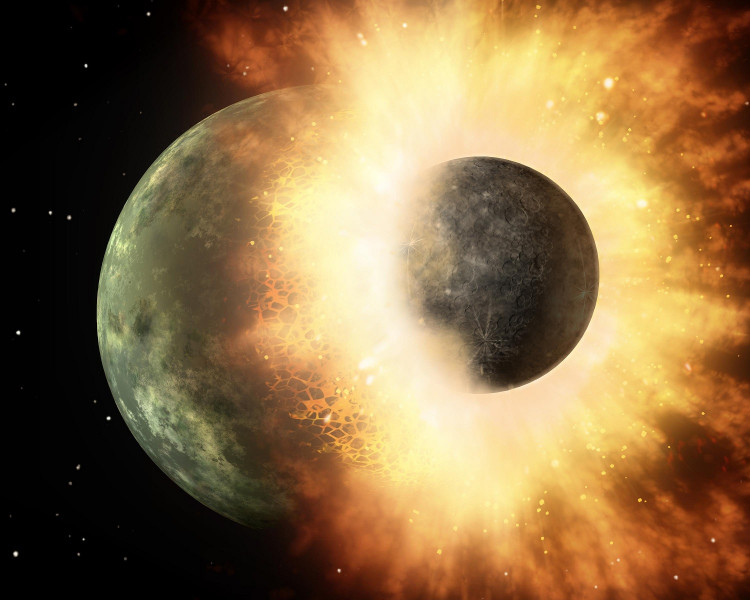Scientists had discovered new evidence of lunar rocks suggesting that the moon was likely formed more than 4 billion years ago when a Mars-sized body slammed into the proto-Earth.
More than 50 years ago, a NASA-led team analyzed moon rocks carried back to Earth by Apollo astronauts. The crew found more proof of the "giant impact theory" by concentrating on the quantity and form of chlorine in the rocks, a recent study states, by analyzing the samples with specialized methods not available to researchers in the 1960s and 1970s.
Compared to Earth, which sports more "light" chlorine, the researchers discovered that the moon has a higher concentration of "heavy" chlorine. The words "heavy" and "light" refer to forms, identified as isotopes, of the chlorine atom that has different neutron numbers in their nuclei.
Earth was only able to remain intact soon after the mammoth impact happened, while parts of both worlds that were blasted into orbit converged to form the moon. At first, each of these blobby bodies held a combination of light and heavy chlorine isotopes; however, as Earth's gravity pulled on the newly-forming body, the balance started to shift.
Earth tugged up the lighter chlorine toward itself as the celestial bodies began to assume new form after the collision, making the heavier chlorine on the moon tougher to shift. Compared to a heavier isotope, this left the moon stripped of lighter chlorine.
"There's a huge difference between the modern elemental makeup of the Earth and moon, and we wanted to know why," study co-author Justin Simon, a NASA planetary scientist, said in a statement. "Now, we know that the moon was very different from the start, and it's probably because of the 'giant impact' theory."
By looking at other elements that are halogens in the same chemical family as chlorine, the researchers have tested their interpretation. Also, other "light" halogens on the moon are less plentiful, and the team did not find any pattern that would indicate the loss was caused by a later event.
The new report was published in the Proceedings of the National Academy of Sciences this month. Anthony Gargano, a graduate fellow at NASA's discovery and exploration science division for astromaterials at the Johnson Space Center in Houston, led it.
In favor of the giant impact theory, which was first proposed decades ago, the study contributes to a growing mountain of chemical evidence. Research published in March of this year, for instance, used high-precision oxygen isotope measurements to demonstrate that Earth and moon rocks are likely to be far more distinct from each other than previously thought.




